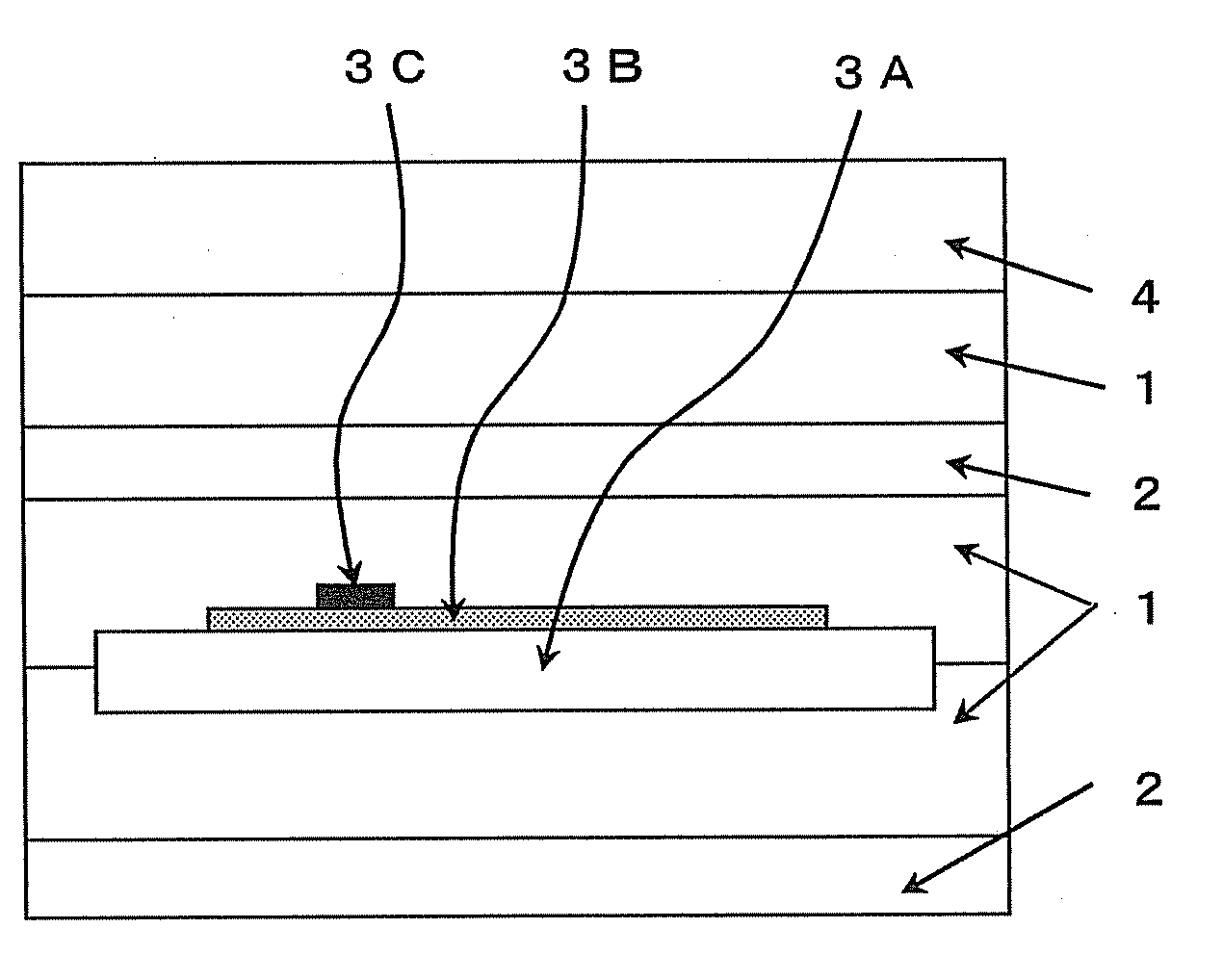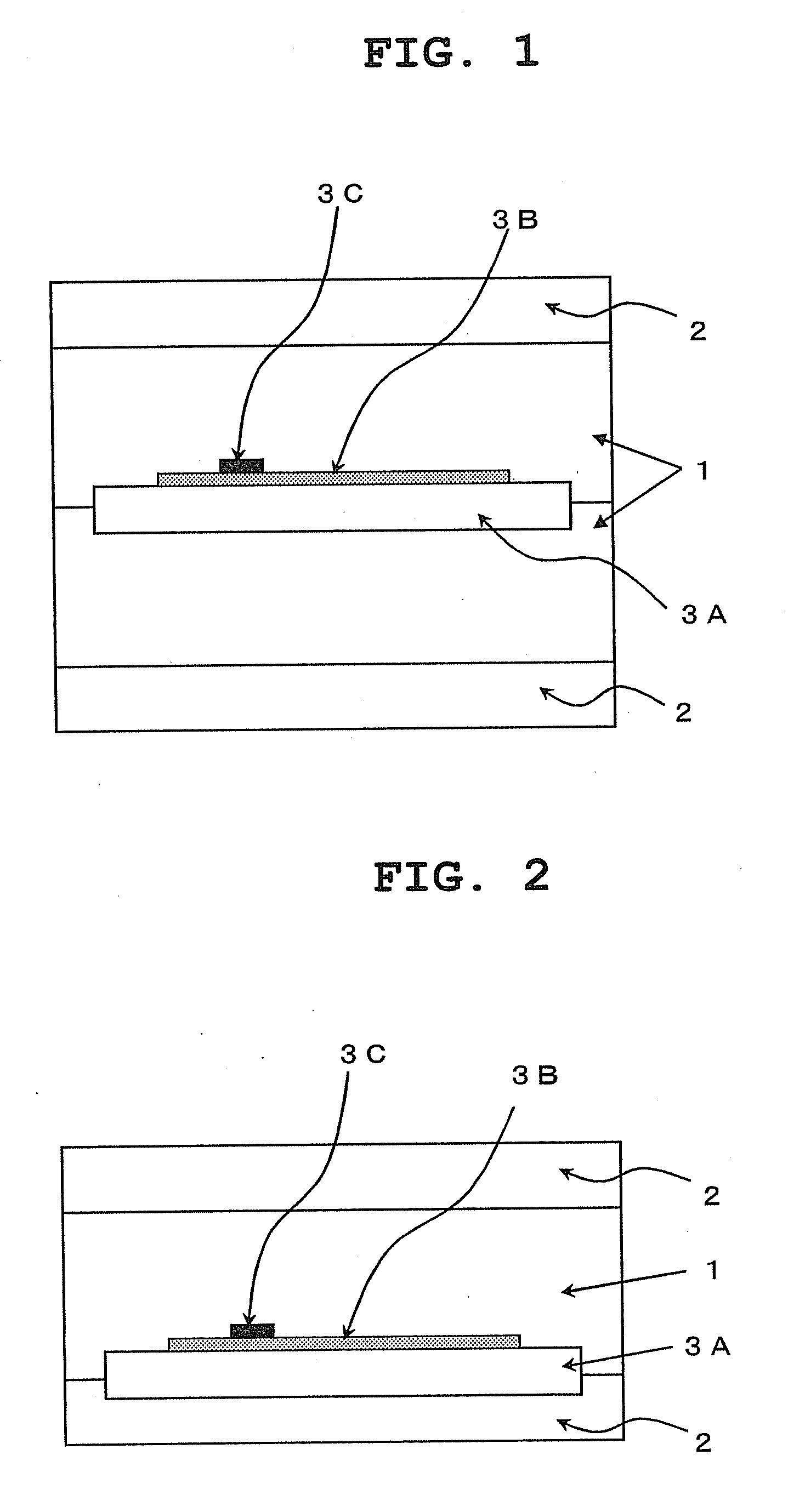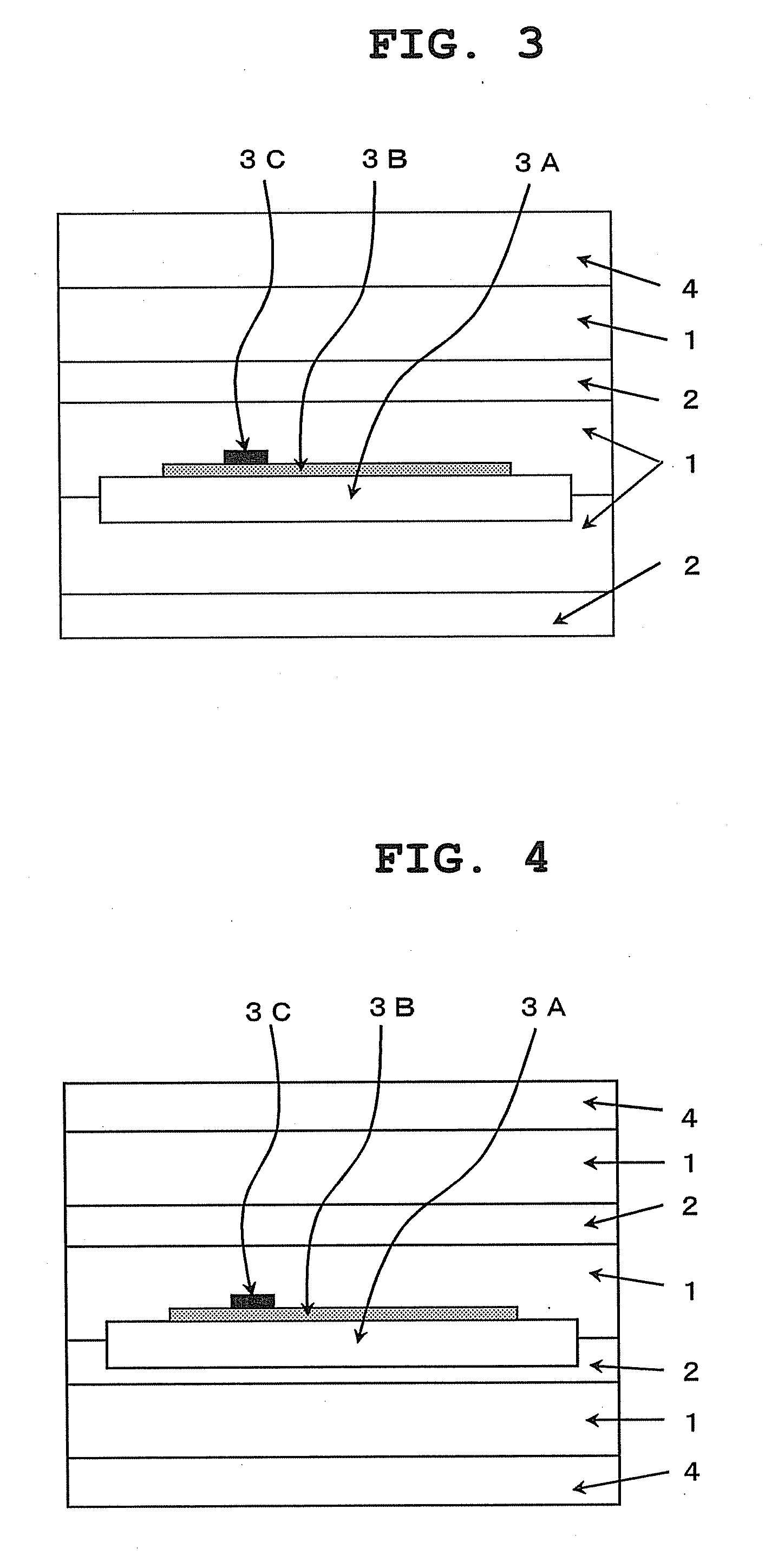Thermobondable polyester film, process for production of IC cards or IC tags with the same, and IC cards with IC tags
a polyester film and bonding technology, applied in the field of thermobonding polyester film, can solve the problems of insufficient heat resistance, difficult to solve, and poor chemical resistance of sheets, and achieve excellent thermal adhesiveness and ruggedness absorbability, excellent environmental suitability (halogen-free), and chemical resistance. excellent
- Summary
- Abstract
- Description
- Claims
- Application Information
AI Technical Summary
Benefits of technology
Problems solved by technology
Method used
Image
Examples
example 1
Production of Polyethylene Terephthalate Resin
[0159]When the esterification reaction vessel was heated to reach 200° C., a slurry comprising 86.4 parts by mass of terephthalic acid and 64.4 parts by mass of ethylene glycol was charged, and while stirring, 0.017 parts by mass of antimony trioxide as the catalyst and 0.16 parts by mass of triethylamine were added. Next, heating was performed, and a pressurized esterification reaction was carried out under the conditions of 0.34 MPa gauge pressure and 240° C.
[0160]Thereafter, the inside pressure of the esterification reaction vessel was returned to normal pressure, and 0.071 parts by mass of magnesium acetate tetrahydrate and then 0.014 parts by mass of trimethyl phosphate were added. Furthermore, after the temperature was raised to 260° C. over 15 minutes, 0.012 parts by mass of trimethyl phosphate and then 0.0036 parts by mass of sodium acetate were added. The esterification reaction product obtained was transferred to a polymerizati...
example 2
[0173]A mixture consisting of 6% by mass of the aforementioned master pellets containing a hollow-forming agent, 14% by mass of the aforementioned master pellets containing titanium oxide, and 80% by mass of the aforementioned PET resin was used as the raw material M. A mixture comprising 94% by mass of the non-crystalline polyester resin A1, 5% by mass of the above-described polystyrene resin, and 1% by mass of polyethylene resin (manufactured by Mitsui Chemicals, Inc., Hi-wax NL500) was used as the raw material C. Furthermore, the amount of resin discharged from each extruder was regulated so that the lamination thicknesses of the thermoadhesive layer and the intermediate layer (substrate) would be 30 / 240 / 30 (unit of measurement: μm) after biaxial stretching. In the same manner as Example 1, except for these conditions, a thermoadhesive polyester film was obtained. Using a hollow-containing white polyester film (manufactured by Toyobo, Crisper K1212, thickness 188 μm, apparent den...
example 3
[0174]A mixture consisting of 8% by mass of the aforementioned master pellets containing a hollow-forming agent, 6% by mass of the aforementioned master pellets containing titanium oxide, and 86% by mass of the aforementioned PET resin was used as the raw material M. The amount of polystyrene resin added in the raw material C was 20% by mass. In the same manner as Example 1, except for these conditions, a thermoadhesive polyester film was obtained. Using a hollow-containing white polyester film (manufactured by Toyobo, Crisper K2323, thickness 188 μm, apparent density 1.1 g / cm3) in place of sandmat-processed biaxially stretched polyester film, an IC card was obtained. The thermoadhesive polyester film obtained in this Example 3 is a film reconciling thermal adhesiveness and ruggedness absorbability and sliding quality suitable for core sheets used in IC cards. The heat resistance, flatness, hiding quality, and lightness were also suitable for IC card materials. The IC card obtained ...
PUM
| Property | Measurement | Unit |
|---|---|---|
| Temperature | aaaaa | aaaaa |
| Temperature | aaaaa | aaaaa |
| Temperature | aaaaa | aaaaa |
Abstract
- (a) a crystalline resin having a melting point of 50 to 180° C.,
- (b) a non-crystalline resin having a glass transition temperature of −50 to 150° C., and (c) a mixture thereof, and contained at 1 to 30% by mass in the thermoadhesive layer.
Description
Claims
Application Information
 Login to View More
Login to View More - R&D
- Intellectual Property
- Life Sciences
- Materials
- Tech Scout
- Unparalleled Data Quality
- Higher Quality Content
- 60% Fewer Hallucinations
Browse by: Latest US Patents, China's latest patents, Technical Efficacy Thesaurus, Application Domain, Technology Topic, Popular Technical Reports.
© 2025 PatSnap. All rights reserved.Legal|Privacy policy|Modern Slavery Act Transparency Statement|Sitemap|About US| Contact US: help@patsnap.com



